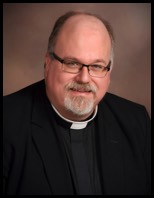Colors and Seasons
By: Rev. Gregory S. Neal
Some of you have been asking about the reasons why liturgical churches change the colors in the sanctuary at certain times of the year. Why, for example, do Methodists, Anglicans, Lutherans, Roman Catholics, and other similar kinds of Christians use white in some seasons, purple in others, red at other times, and green as well. Why do we change the colors? Is it just for appearance, or is there some rationale behind it.
Throughout the history of the church various colors have been associated with the different seasons of the church year. Unlike the secular calendar, the church year runs from Advent, starting either the last Sunday in November or the first Sunday in December, and running to Christ The King Sunday on the second to the last or the last Sunday in November.
The colors for the season of Advent are purple and blue; it is a special time of preparation in which Christians get ready to celebrate the coming of Jesus.
The season of Advent ends on Christmas Eve, with the beginning of the Christmas season. The colors for Christmas are white and gold; it is a time of celebration, praise, and thanksgiving for the incarnation of God in Jesus Christ.
Epiphany ends the Christmas weason, and the Sundays after Epiphany are designated by the color green. The first Sunday focuses on the Baptism of Christ and the last Sunday focuses on his Transfiguration.
The color for the season of Lent is purple; this season begins on Ash Wednesday, usually in mid-February, and lasts for 40 days, not counting Sundays. The word "Lent" comes from the Anglo-Saxon word lencten, which means "spring." The season is a time of profound preparation for the celebrating of Easter. Historically, Lent began as a period of fasting and preparation for baptism by converts to the faith, and then over time became a period of confession and penance practiced by all Christians. The First Sunday in Lent describes Jesus' temptation by Satan and the Sixth Sunday (Passion or Palm Sunday) deals with Christ's victorious entry into Jerusalem and his subsequent passion and death. Because Sundays are always considered "little Easters," the penitential spirit of Lent should always be held in check with the reminder of the coming resurrection.
The Season of Easter is set apart with the colors of white and gold, and begins with the setting of the sun on Holy Saturday evening and continues through the Day of Pentecost. This season is the joyous time of the Christian year. It focuses, of course, upon the resurrection and ascension of our Lord savior, Jesus Christ. The ancient Christian name for this season is "Pasch," derived from the Hebrew "Pesah," meaning "deliverance" or "Passover." The resurrection is, therefore, closely linked with the Exodus. The origin of the English word "Easter" is disputed, but some scholars think that it may come from the Anglo-Saxon spring goddess Eastre and her annual festival of fertility.
Easter Season closes with Pentecost Sunday. The color for Pentecost is red, which symbolizes the powerful presence of the Holy Spirit, which birthed and empowers the Church as the Body of Christ. Contrary to common misconception, there is no "Pentecost Season." Rather, we designate this period as "the Sundays After Pentecost." The Season is technically known as "Ordinary Time," and the colors for this season are either red or green. In the old Methodist Church it was common practice to use red from Pentecost Sunday through to middle of August, and then switch to Green for the last months of the season (mid August - late November). Since the beginning of the liturgical renewal of the 1970s and 1980s, many UM Churches have gone to green beginning almost immediately after Pentecost; green symbolizes the life of the body of Christ, and hence it is an appropriate color for the Season After Pentecost. However, many others (myself included) prefer to maintain red through the first half of Ordinary Time in order to serve as a reminder that it is only by the power and presence of the Holy Spirit that we, as the Body of Christ, live and move and have our being. Hence, I like for us to follow red with green at some point in mid-August. The change also makes for a refreshing difference in what is, otherwise, the longest -- and hottest -- season of the Church year.
© 1993 Rev. Gregory S. Neal
All Rights Reserved

As a popular teacher, preacher, and retreat leader, Dr. Neal is known for his ability to translate complex theological concepts into common, everyday terms. His preaching and teaching ministry is in demand around the world, and he is available for public engagements. He is the author of several books, including Grace Upon Grace: Sacramental Theology and the Christian Life, which is in its second edition, and Seeking the Shepherd's Arms: Reflections from the Pastoral Side of Life, a work of devotional literature. Both of these books are currently available from many book stores, including Cokesbury, Barnes And Noble, and Amazon.